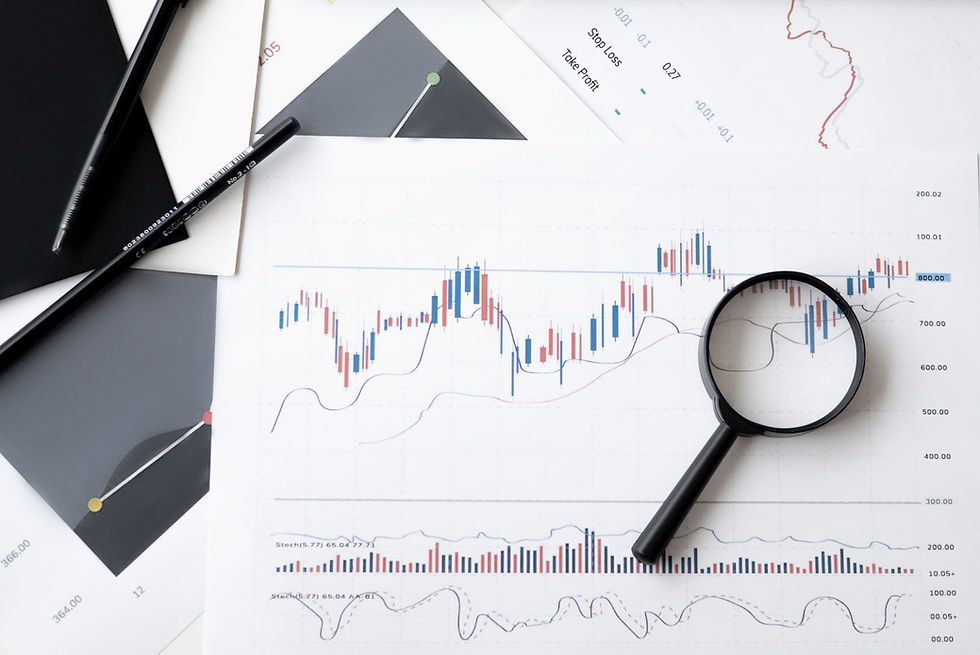Chapter 13: What are the top 10 countries trading forex the most — 2025 update
- Oct 2
- 4 min read
Updated: Oct 20
A RebateTraderX guide (clear, sourced, trader-focused)
Short answer: the biggest forex trading centres (by trading activity reported) are led by the United Kingdom (London), followed by the United States, Singapore, Hong Kong, Japan, then other large financial centres such as China, Switzerland, Australia, Germany and Canada. These places together account for the vast majority of global FX turnover.
Below is a short, practical breakdown of the top 10 and why each ranks highly — plus a brief note on how this ranking is measured.
How we measure “most forex trading”
There are two common ways people talk about “where the most FX trading happens”:
Institutional turnover by reporting location — the Bank for International Settlements (BIS) triennial survey collects turnover reported by dealer sales-desks (where trades are booked) and is the gold standard for global FX volumes. This is the basis for the list below.
Retail interest & trader population — separate from institutional booking, retail participation (number of active traders, platform volumes) can shift rankings a little for retail-heavy markets (e.g., Japan). We call this out where relevant.
Keep in mind: a country can be a major FX centre without having the largest number of retail traders, because much turnover is institutional and cross-border.

Top 10 countries / jurisdictions for forex trading (what matters and why)
1) United Kingdom — # 1 (London)
London remains the global FX hub — the BIS and national reports show the UK as the single largest centre of FX activity (by sales-desk location). London’s market share of global turnover is the biggest of any jurisdiction. That makes it the primary liquidity and pricing centre for FX.
2) United States — # 2 (New York & US desks)
The US is the second largest FX booking centre and a huge market for futures, forwards and dollar-denominated activity. New York’s role in global markets and the dollar’s dominance keep the US high in turnover.
3) Singapore
Singapore is the biggest Asian FX hub for offshore trading and has steadily grown its share. In recent surveys it is among the top three reporting centres, driven by regional banks, hedge funds and prime brokers.
4) Hong Kong SAR
Hong Kong is a major booking centre for Asian FX flows (onshore-offshore China business, regional liquidity), and local statistics show strong daily turnover growth in recent BIS surveys.
5) Japan
Japan’s FX market is large and unique: it has very high retail FX participation (many retail accounts and very large retail volumes), and Tokyo is a key hub for JPY liquidity. Retail activity in Japan has pushed the country high in FX volume rankings.
6) China (mainland / Shanghai)
China’s onshore FX trading and the growing use of the Chinese renminbi have lifted its role in global FX. The yuan’s share of global FX trading has grown over recent years as China opens further and onshore/offshore linkages expand.
7) Switzerland
Zurich is an established FX centre (big private banks, asset managers and FX intermediation). Switzerland’s FX activity is significant relative to its size because of global wealth management flows and FX hedging activity.
8) Australia
Australia (Sydney and institutional desks) is an active FX market in APAC and, according to national surveys and BIS breakdowns, saw turnover gains in recent cycles — useful for AUD liquidity and Asia-Pacific trading hours.
9) Germany
As a major euro-area economy and trading/hedging centre, Germany shows up in BIS and related data as one of the larger European reporting locations outside the UK and Switzerland. It contributes materially to euro-zone FX turnover.
10) Canada
Canada’s FX market (Toronto / Canadian reporting desks) is also sizable — the BIS/national survey shows Canada’s turnover rose materially in the most recent survey periods and ranks it among the top dozen centres.
Quick context — what this means for traders
Liquidity & execution: If your broker routes orders via desks in the UK/US/Singapore/HK, you’ll generally see deeper liquidity and tighter pricing for major pairs.
Currency focus: Local currency activity matters — Tokyo/London/New York are the places for best JPY, GBP and USD liquidity respectively.
Retail vs institutional: Japan is retail-heavy; London/Singapore/HK/NY are institutional hubs. Which matters depends on your strategy (scalping vs longer swing trades).
Caveats & methodology
Snapshot vs continuous: BIS is a snapshot (April surveys), updated every three years; other sources publish more frequent platform-level volumes. Rankings shift slowly but can change with market structure and regional growth.
“Country” vs “financial centre”: BIS reports by booking/desk location which is why London appears so dominant — some trades booked in London are executed elsewhere. That’s normal for modern cross-border FX.
Sources & further reading
BIS Triennial Central Bank Survey (global FX turnover & geography). Federal Reserve Bank of New York+1
Bank of England summary & UK results (London’s FX share). Bank of England
Hong Kong Monetary Authority — 2022 results and turnover figures. Hong Kong Monetary Authority
Japan / retail FX market coverage and Q3 2024 regional reports. Finance Magnates
Reuters coverage of BIS findings and RMB market share growth. Reuters
If you want the deepest FX liquidity and tightest pricing, choose brokers that operate through (or route orders to) desks in London, New York, Singapore and Hong Kong. For retail traders, Japan is notable for very high retail activity, while China, Switzerland, Australia, Germany and Canada round out the top global venues by institutional turnover.



Comments